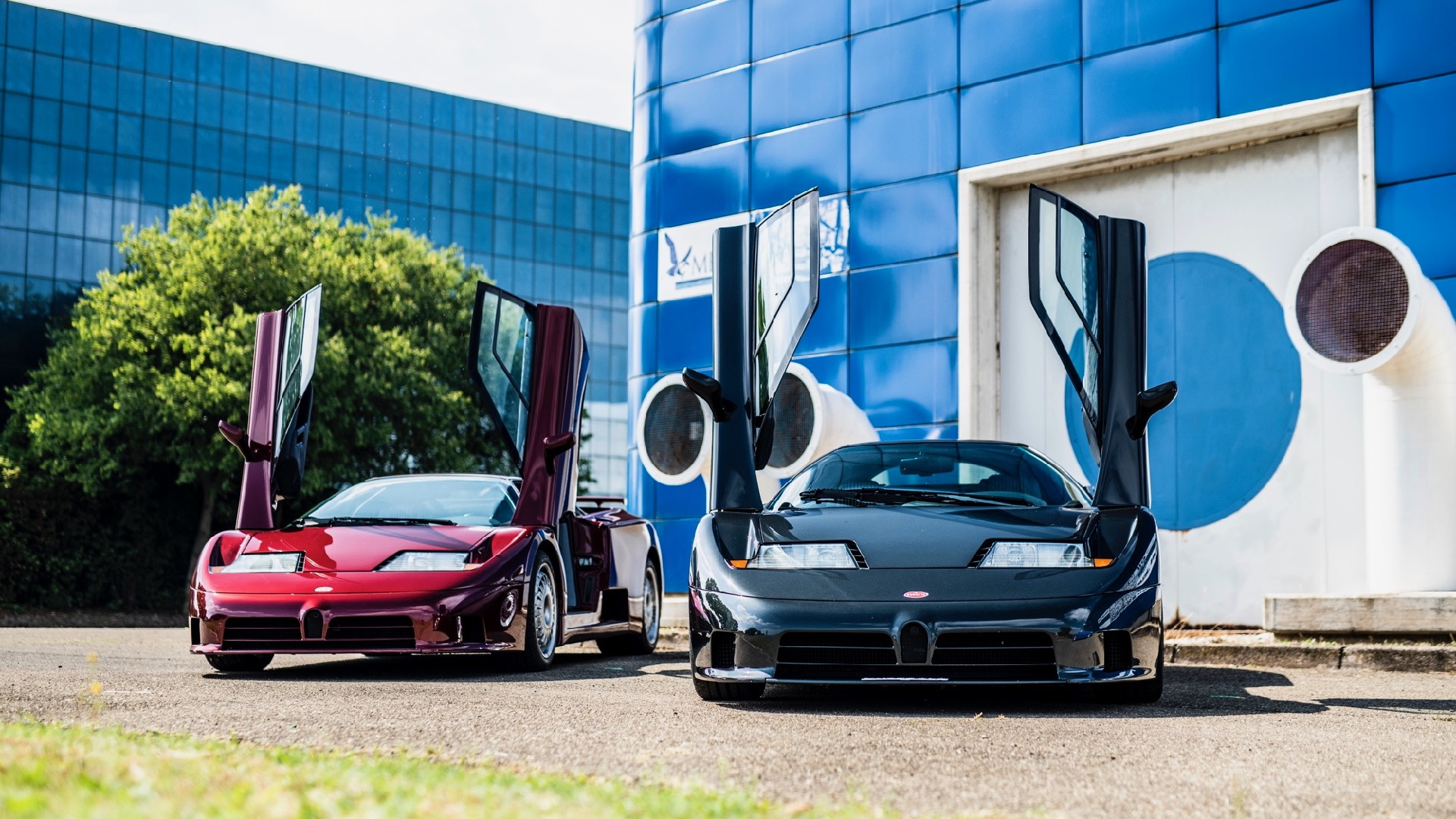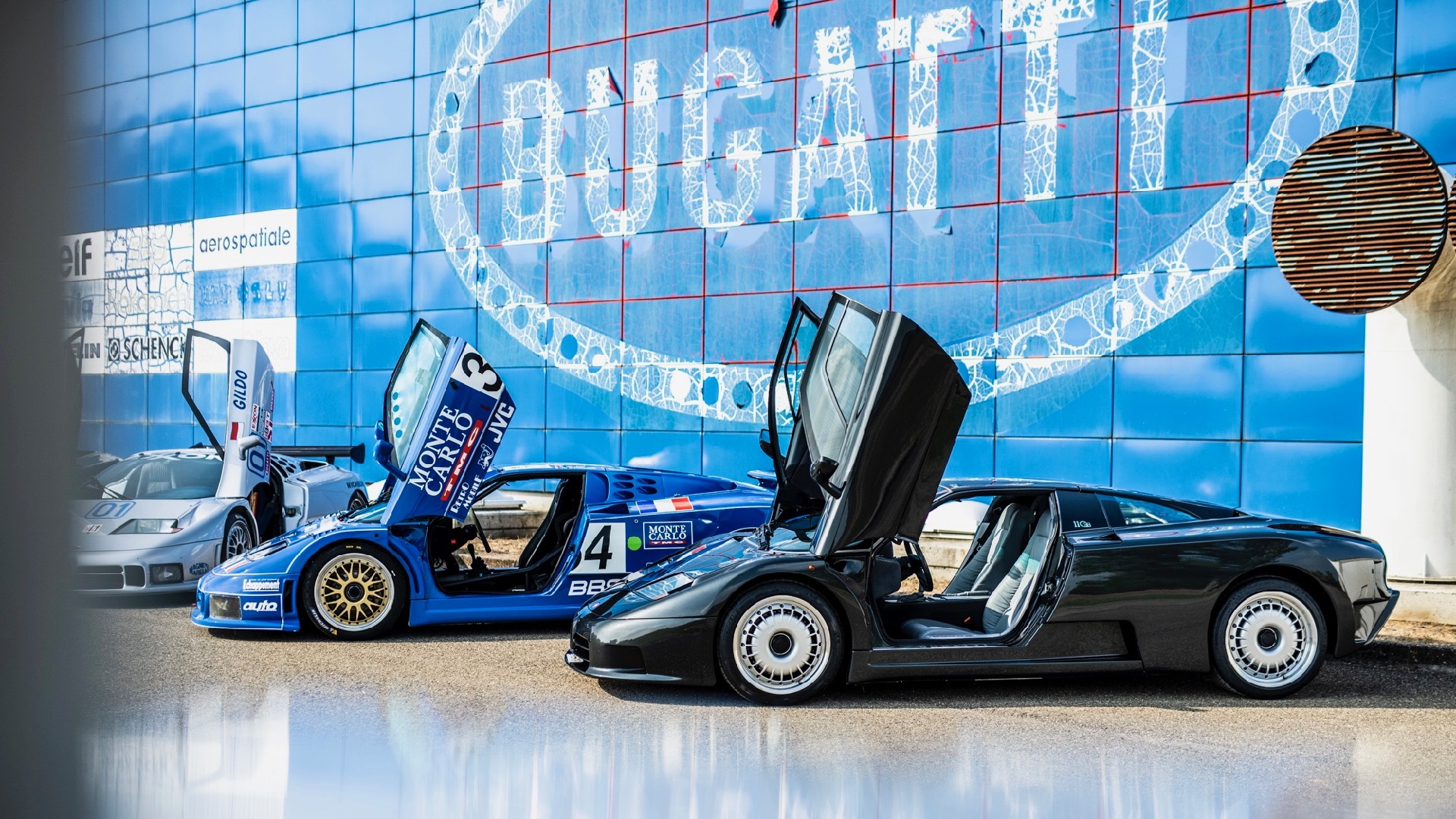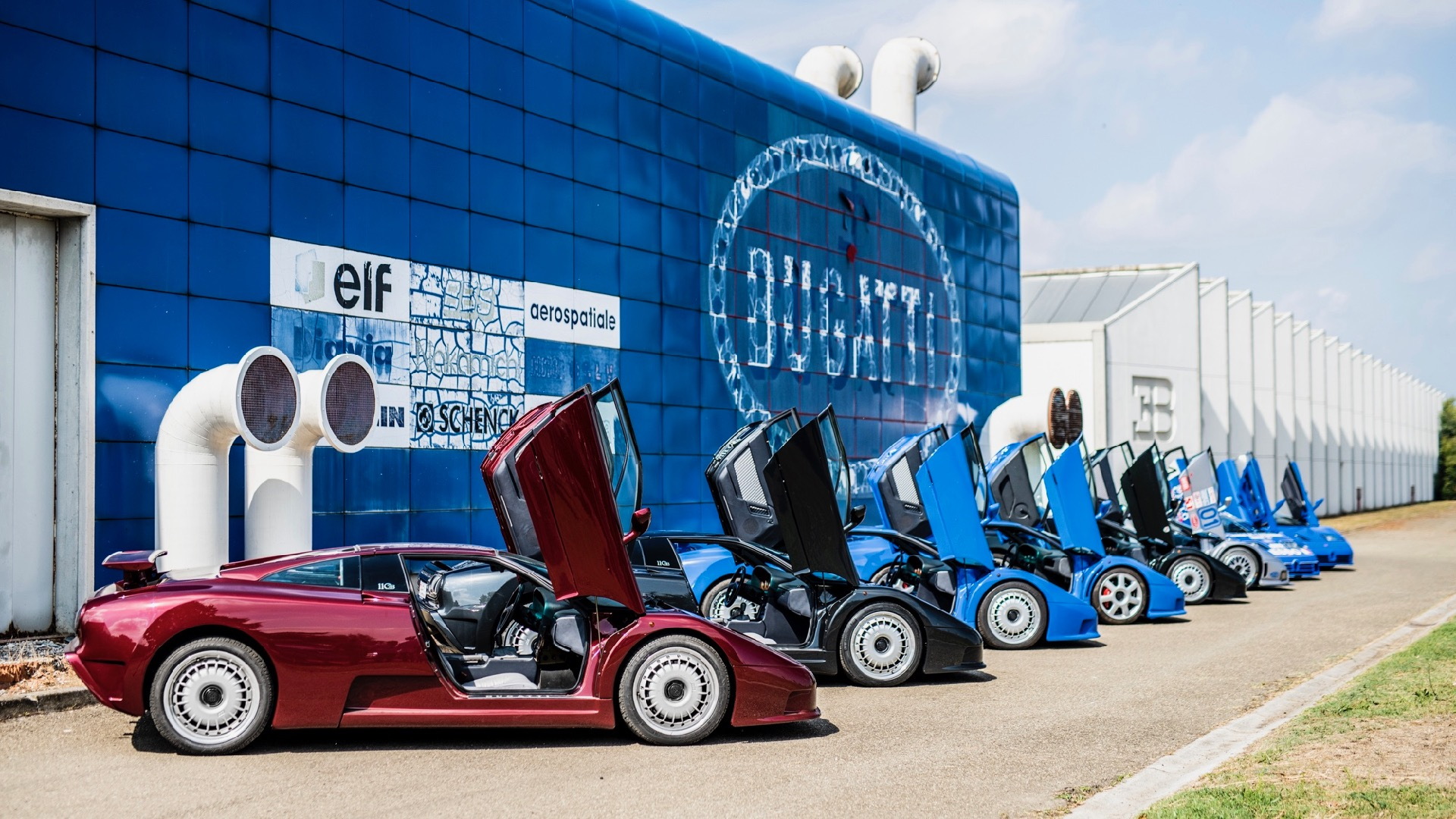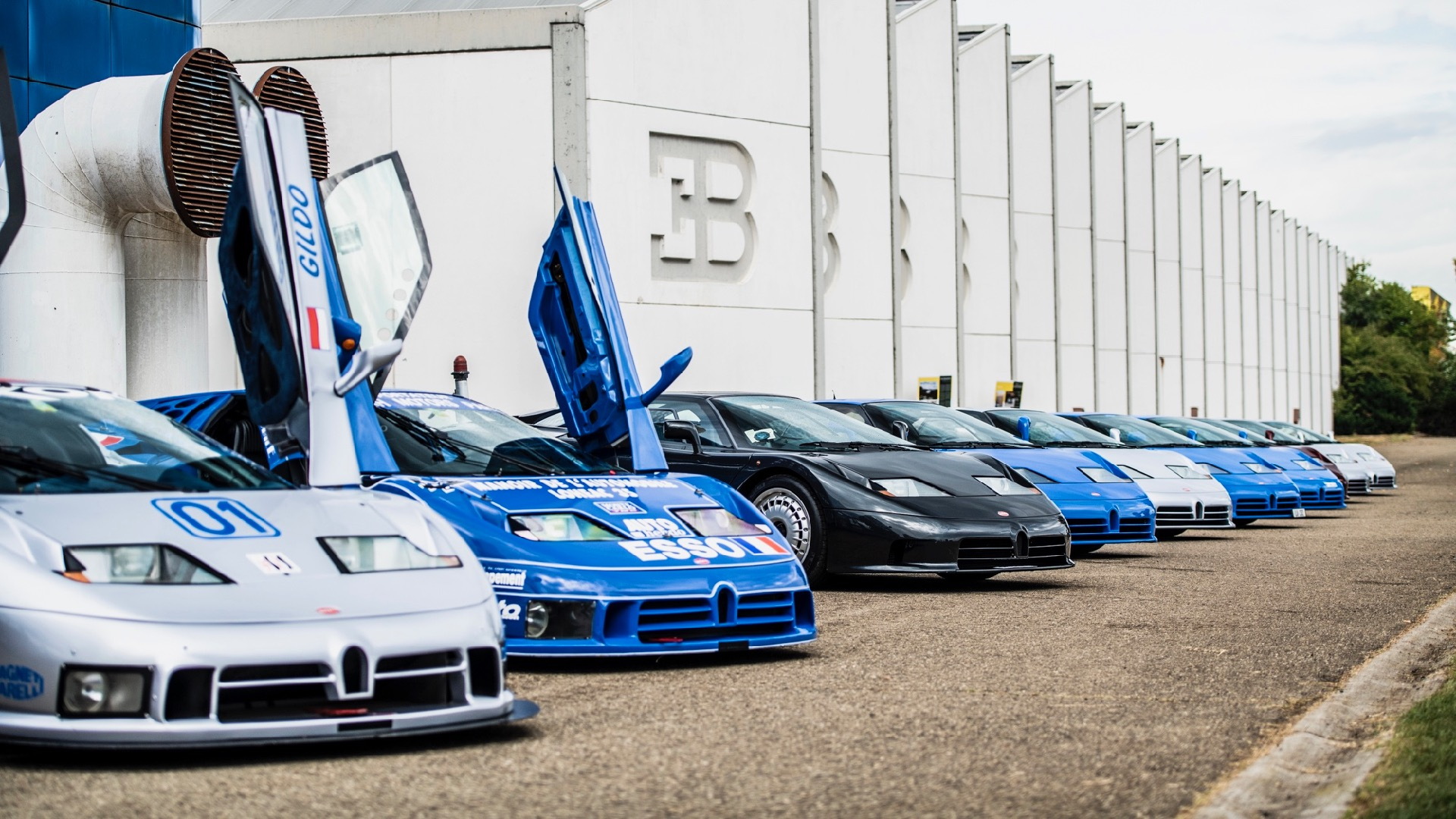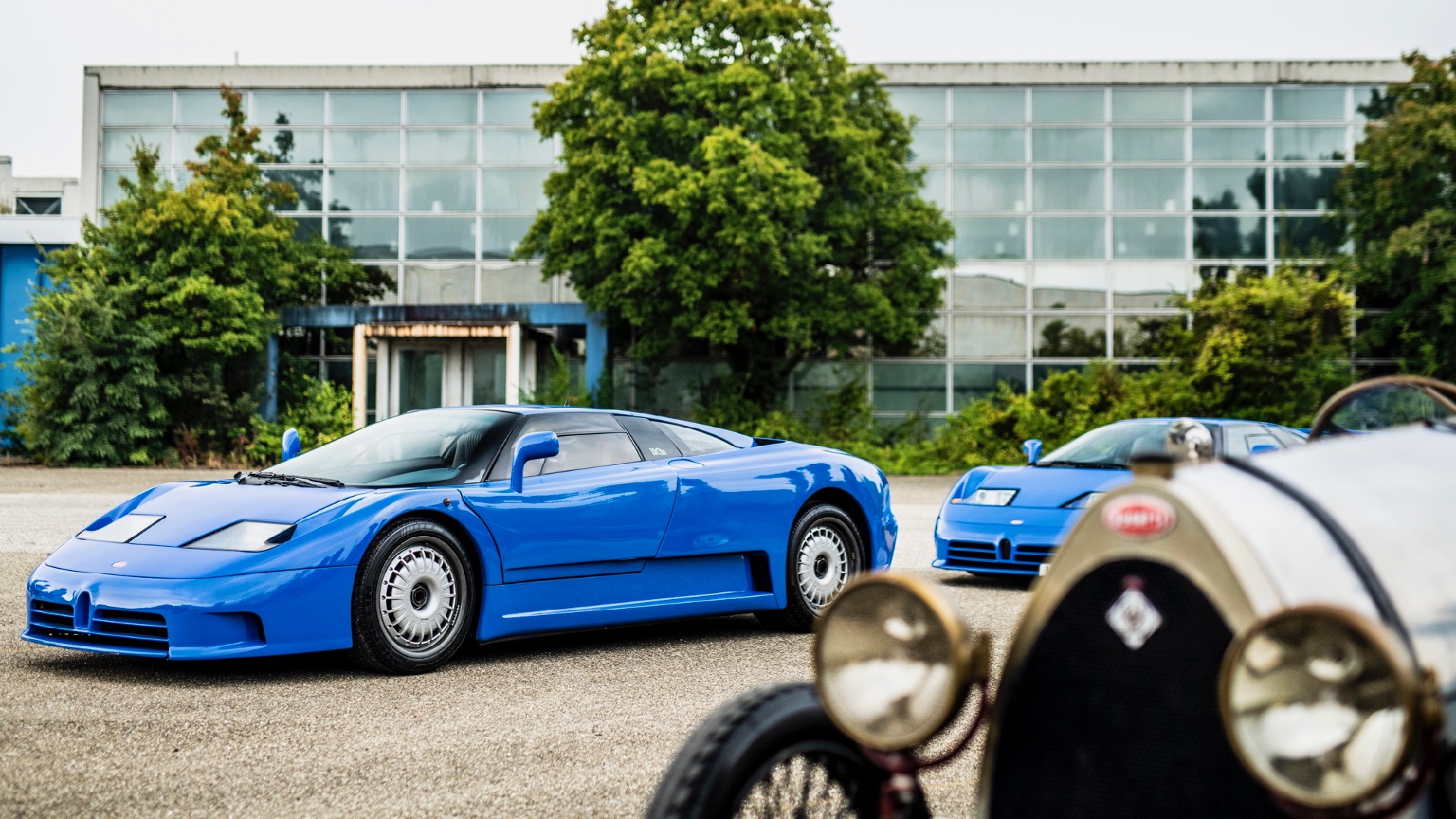This year marks the 30th anniversary of the unveiling of the Bugatti EB110. While this effort to revive Bugatti for the modern age failed, it laid the foundation for the brand's revival under Volkswagen Group stewardship.
The EB110 was the brainchild of Italian businessman Romano Artioli, who as a 20-year-old vowed to revive Bugatti when production ceased in 1952. Artioli acquired the rights to the Bugatti name in the 1980s, and commissioned a new factory in Campogalliano, Italy.
Artioli's Bugatti Automobiles S.p.A. unveiled the EB110 in Paris on September 15, 1991, on what would have been Ettore Bugatti's 110th birthday. The EB110 was one of the most extreme supercars of its day, boasting a quad-turbocharged 3.5-liter V-12, carbon-fiber bodywork (then a novelty for road cars), and all-wheel drive.

Bugatti EB 110 unveiling
The V-12 made 552 hp in the standard EB110 and 592 hp in the Super Sport version. Bugatti quoted 0-62 mph in 3.2 seconds and a 218-mph top speed. Still impressive by today's standards, those numbers were earth shattering in 1991. The EB110 was briefly the world's fastest production car, though the record would soon go a certain McLaren F1.
After the initial excitement died down, things quickly unraveled. Financial issues, including debts incurred by Artioli after an investment in Lotus, sent Bugatti into bankruptcy. Just 128 cars were completed before production ended, although a handful of additional cars were later completed by Germany's Dauer using spare chassis, some of which were also used for the SP-110 Edonis Fenice announced in 2018.
VW acquired the rights to Bugatti in 1998 and the rest, as they say, is history. In 2019, Bugatti unveiled a tribute to the EB110 called the Centodieci. It's a coach-built special based on the Chiron, with styling inspired by the EB110 and an $8.9 million price tag. All 10 cars quickly sold out.
